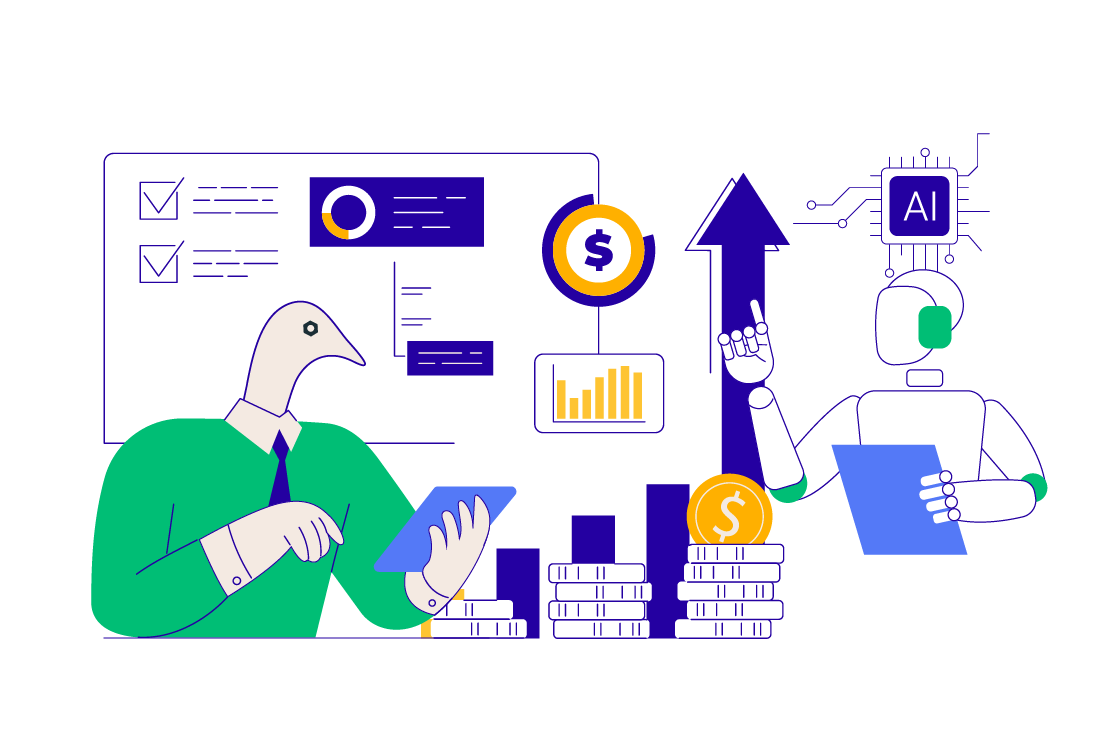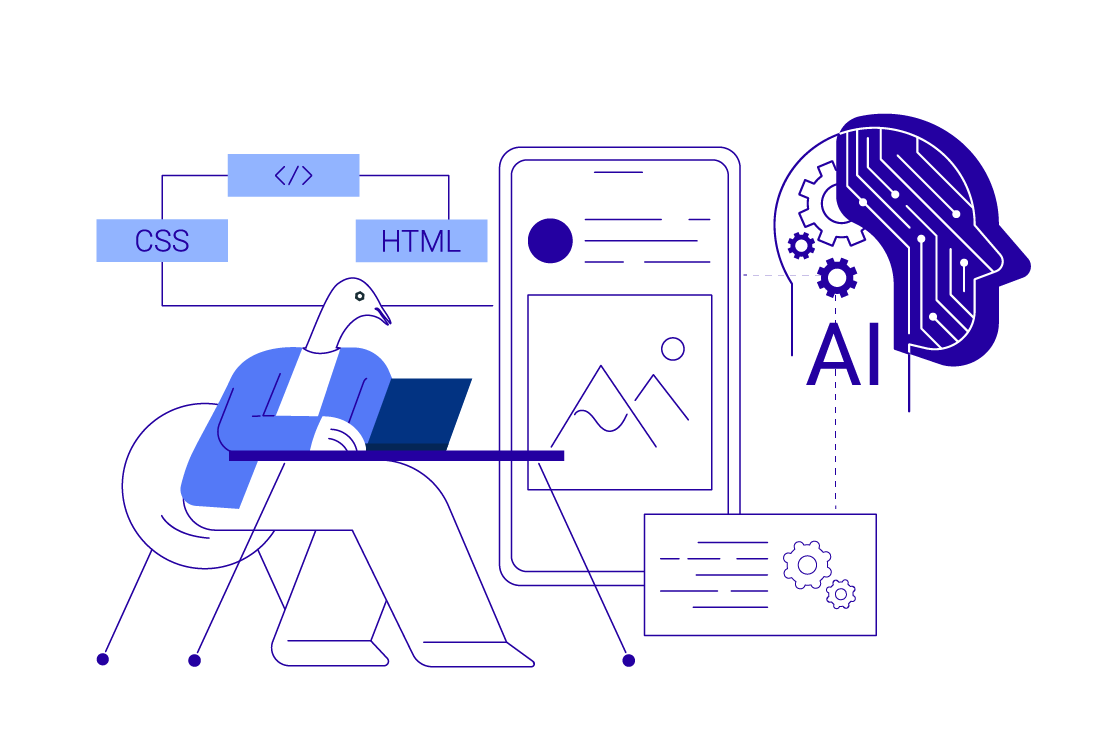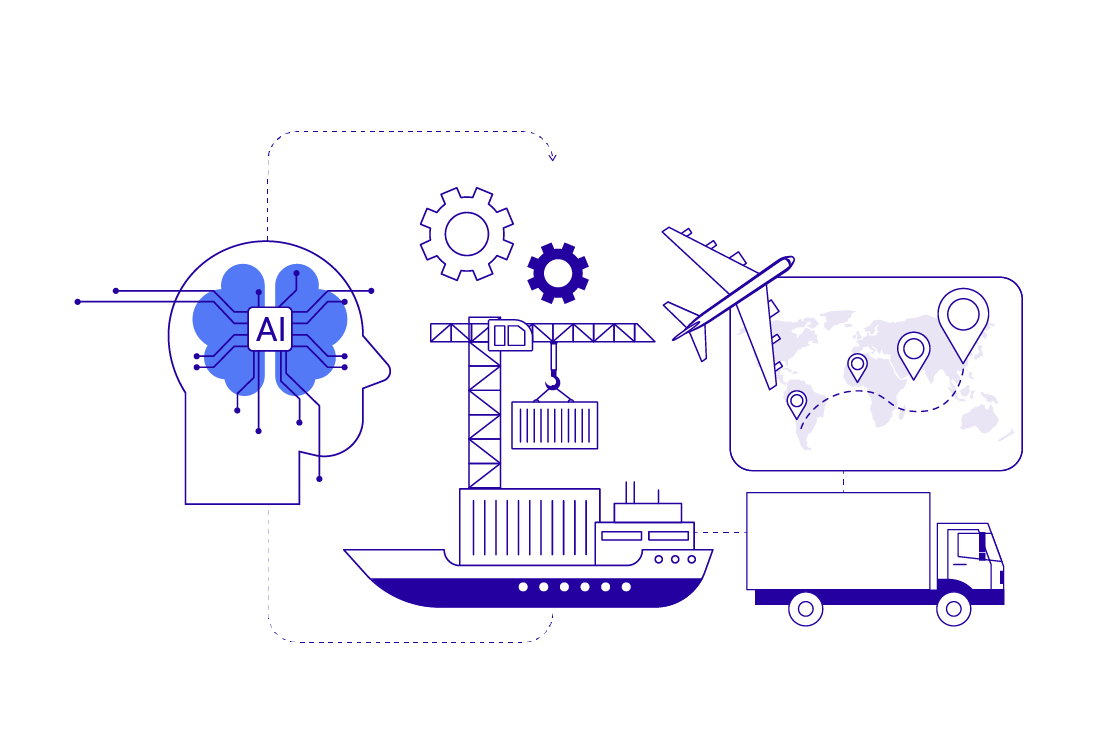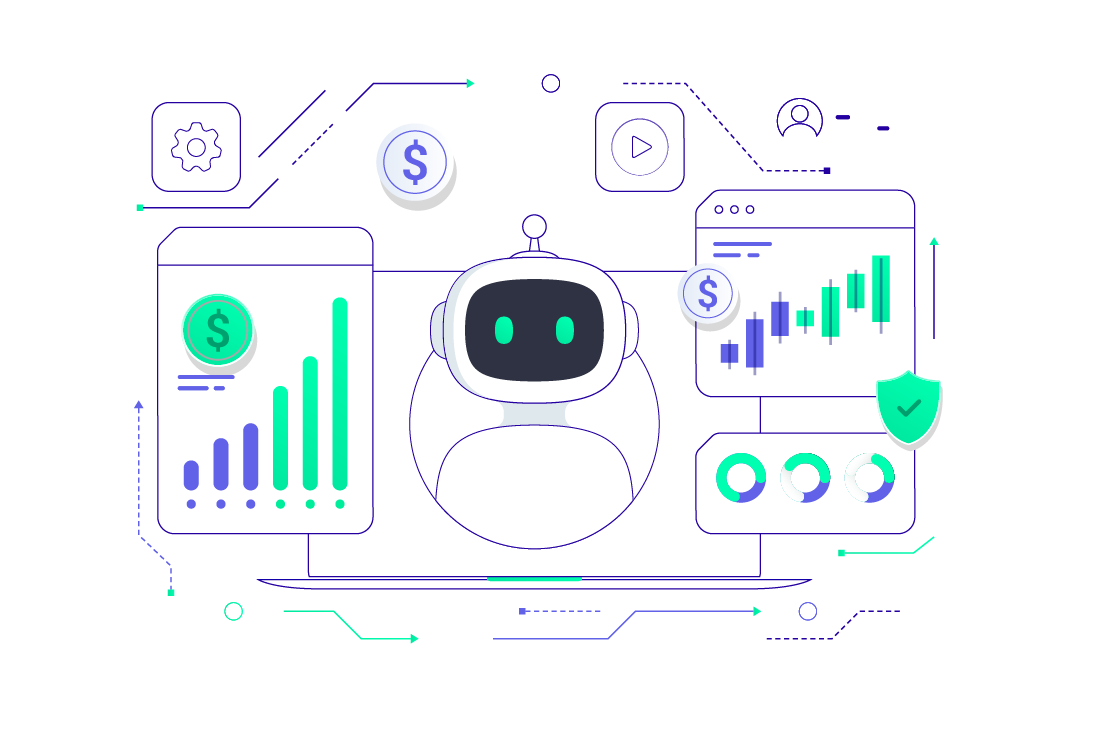Artificial Intelligence has moved beyond hype. For CXOs, the burning question is no longer “what is AI?” but “how exactly does AI deliver measurable value to my business?”
From predicting consumer demand and optimizing supply chains to automating customer interactions, AI algorithms are no longer science projects; they are profit drivers.
Yet, much of the technical jargon such as word prediction, loss functions, and proof-based reasoning remains shrouded in mystery for decision-makers.
This blog cuts through the complexity and explains, in plain business terms, how AI algorithms truly generate value.
We’ll also explore why programming languages are less critical in an AI-first era, and how outcome-driven AI reduces IT complexity. Also, why leaders must weigh efficiency against transparency in every deployment.
AI Beyond Buzzwords: Why CXOs Need Clarity?
Executives often hear terms like deep learning, transformer models, or loss of optimization without understanding their business impact.
AI is pattern recognition at scale. At its core, AI finds relationships in massive datasets that humans would miss. Algorithms are value engines; their efficiency of algorithms determines how fast insights become actions.
Understanding these fundamentals equips CXOs to ask the right questions when evaluating AI Algorithms investments:
What decisions will this AI improve?
How much efficiency or revenue lift can we expect?
What risks come with the implementation?
Business outcomes matter more than technical details. No CFO cares whether an algorithm was written in Python or R, they care about the ROI it produces.
Demystifying Word Prediction, Loss Functions, And Proof-Based Reasoning
Word Prediction: The AI Algorithms That Powers Conversations
If you’ve used Gmail’s smart replies or a chatbot that anticipates your queries, you’ve seen word prediction in action. But beyond convenience, how does this translate into business value?
Customer Service Efficiency: AI-driven assistants reduce call center volumes by predicting customer intent, slashing resolution times.
Sales Enablement: Predictive text helps sales teams craft responses faster, enabling quicker engagement cycles.
Employee Productivity: Automated suggestions in email or documentation save hours of repetitive typing across large organizations.
For CXOs, the lesson is that prediction equals speed. The faster your systems anticipate needs, the more agile your workforce becomes, and agility is the ultimate competitive advantage.
Loss Functions: The Hidden CFO of AI
Every business unit measures success with KPIs such as revenue growth, cost reduction, and customer satisfaction. In AI, those KPIs take the form of loss functions.
A loss function is essentially the algorithm’s way of answering: “How wrong was I?”
Retail Example: Predicting demand for winter coats. If the algorithm underestimates, you face stockouts; if it overestimates, you’re stuck with excess inventory. The loss function penalizes these mistakes until the system gets better at balancing supply with demand.
Healthcare Example: Diagnosing patient conditions. A false negative (missed diagnosis) is far costlier than a false positive. AI’s loss functions can prioritize minimizing life-threatening errors.
For decision-makers, this means AI Algorithms are inherently tied to business goals. The better tuned the loss function, the closer your AI aligns with organizational priorities.
Think of loss functions as the CFO of AI, keeping the system accountable for every wrong prediction until profitability improves.
Proof-Based Reasoning: Trust in AI Decisions
One of the most common concerns among executives is “Can we trust AI decisions?”
Enter proof-based reasoning method where AI doesn’t just provide an answer but backs it with evidence.
Financial Services: AI approving loans must demonstrate the risk factors considered, not just deliver a “yes” or “no.”
Healthcare: A clinical AI suggesting treatment must cite supporting patient data, not operate as a black box.
Legal & Compliance: Decision systems in regulated industries must produce audit trials for every recommendation.
For CXOs, this is where AI Algorithms shift from being a mysterious oracle to a trusted advisor. Proof-based reasoning builds credibility and compliance with readiness, making AI adoption sustainable in risk-sensitive industries.
Why Programming Languages Matter Less in an AI-First Era
In traditional IT, the programming language dictates system speed, scalability, and cost. In the AI-first era, the game has changed.
Cloud Platforms Abstract the Complexity: With AWS, Azure, and Google Cloud offering pre-trained models and low-code/no-code platforms, the “language” matters less than the business problem solved.
APIs Are the Real Currency: Instead of hiring Python specialists, companies can integrate AI through APIs that deliver results instantly.
Focus Shifts to Outcomes, Not Syntax: For executives, the discussion is not about whether developers prefer TensorFlow or PyTorch. It’s about how quickly models can predict churn, detect fraud, or optimize logistics.
This democratization means AI Algorithms’ adoption is no longer limited to companies with elite data science teams. Any enterprise can plug into powerful AI frameworks and realize value faster.
Recommended Read:
Outcome-Based AI: Simplifying IT, Accelerating Innovation
Legacy IT systems are notorious for their complexity, including siloed databases, redundant workflows, and endless integrations. AI presents an alternative: outcome-based design.
Instead of asking, “What technology stack should we build?”, CXOs should ask:
What business outcomes are critical for this quarter?
Which processes bottleneck innovation?
How can AI models remove those bottlenecks directly?
Examples:
Banking: Automating fraud detection saves millions of false claims without rewriting entire IT architectures.
Manufacturing: Predictive maintenance cuts downtime by focusing on machine health outcomes, not IT stack limitations.
Retail: Personalized recommendations boost sales conversions by targeting outcomes—customer satisfaction and retention.
Outcome-based AI allows IT to move from being a cost center to an innovation accelerator.
The Risk-Reward Equation: Efficiency vs. Transparency
AI Algorithms’ adoption is not without trade-offs. Decision-makers must balance:
Efficiency Gains: AI reduces manual effort, accelerates decisions, and improves margins.
Transparency Needs: Without explainability, organizations risk compliance violations, reputational damage, or biased outcomes.
Let’s look at the examples below to have a better understanding.
Insurance: Fast claims processing powered by AI boosts efficiency. But if customers don’t understand why their claim was denied, trust erodes.
Recruitment: AI speeds hiring decisions, but bias in the algorithm can trigger lawsuits and diversity challenges.
The winning strategy for CXOs is to pursue efficiency with explainability safeguards. This ensures that AI deployments don’t just optimize short-term KPIs but also protect long-term brand integrity.
What This Means for CXOs
AI should not be treated as an IT project. It’s a strategic business enabler. Here’s what forward-thinking executives must prioritize:
Define AI in Business Terms: Map AI metrics to revenue, cost, or risk KPIs.
Demand Outcome-Based Deployments: Push teams focus on tangible outcomes, not technical stacks.
Insist on Transparency: Don’t accept black-box answers; ensure AI reasoning aligns with compliance and trust mandates.
Balance Speed with Sustainability: Adopt AI aggressively, but responsibly.
The companies that master this approach won’t just implement AI—they’ll outpace competitors by embedding intelligence into every decision-making process.
Conclusion
The age of AI Algorithms is no longer about pilots or experiments. It’s about enterprise-wide transformation. Algorithms are not abstract math problems; they are the engines of efficiency, foresight, and growth.
From word prediction that enhances customer experiences to loss functions that keep systems aligned with business goals, AI Algorithms are becoming the invisible CFO, COO, and strategist of your enterprise.
But here’s the truth CXOs must embrace: AI will not replace leadership—it will redefine it. The leaders who succeed in this new era are those who understand AI not as a tool, but as a strategic partner in value creation.
BluEnt, one of the leading providers of dedicated AI solutions, understands the vitality and reliability of how efficient AI algorithms can transform your business. They know that the competitive edge no longer lies in data possession but in intelligent, ethical, and outcome-driven use of data.
The only question is: Will your enterprise lead the charge?
FAQs
How do AI algorithms directly impact business ROI?AI algorithms optimize processes, reduce inefficiencies, and uncover revenue opportunities by predicting outcomes more accurately. For instance, predictive demand planning lowers inventory costs, while personalized recommendations boost sales conversions.
Why should CXOs care about loss of functions and proof-based reasoning?Loss functions ensure AI aligns with your business goals by penalizing costly errors, while proof-based reasoning builds trust and compliance readiness by showing why a decision was made. Together, they ensure AI delivers measurable value without hidden risks.
Does the choice of programming language affect AI success?Not significant. In the AI-first era, cloud platforms and APIs abstract technical dependencies. Business outcomes matter far more than whether the model was built in Python, R, or Java. CXOs should focus on results, not coding preferences.
What risks should enterprises face for adoption of AI?The biggest risks are bias in decision-making, lack of transparency, regulatory non-compliance, and over-reliance on black-box models. Balancing efficiency with explainability is critical for sustainable adoption.
How can outcome-based AI reduce IT complexity?Focusing directly on business goals—such as fraud detection, predictive maintenance, or customer churn reduction—outcome-based AI bypasses heavy IT overhauls. This simplifies architecture and accelerates time-to-value.












 AI in Programming: Disruption, Evolution, and CXO Strategy
AI in Programming: Disruption, Evolution, and CXO Strategy  AI in Healthcare Administration: Cutting Costs & Boosting Efficiency
AI in Healthcare Administration: Cutting Costs & Boosting Efficiency  AI for Supply Chain Resilience & Optimization: Strategies for 2025 and Beyond
AI for Supply Chain Resilience & Optimization: Strategies for 2025 and Beyond  AI in Financial Services: From Risk Management to Revenue Growth
AI in Financial Services: From Risk Management to Revenue Growth 
